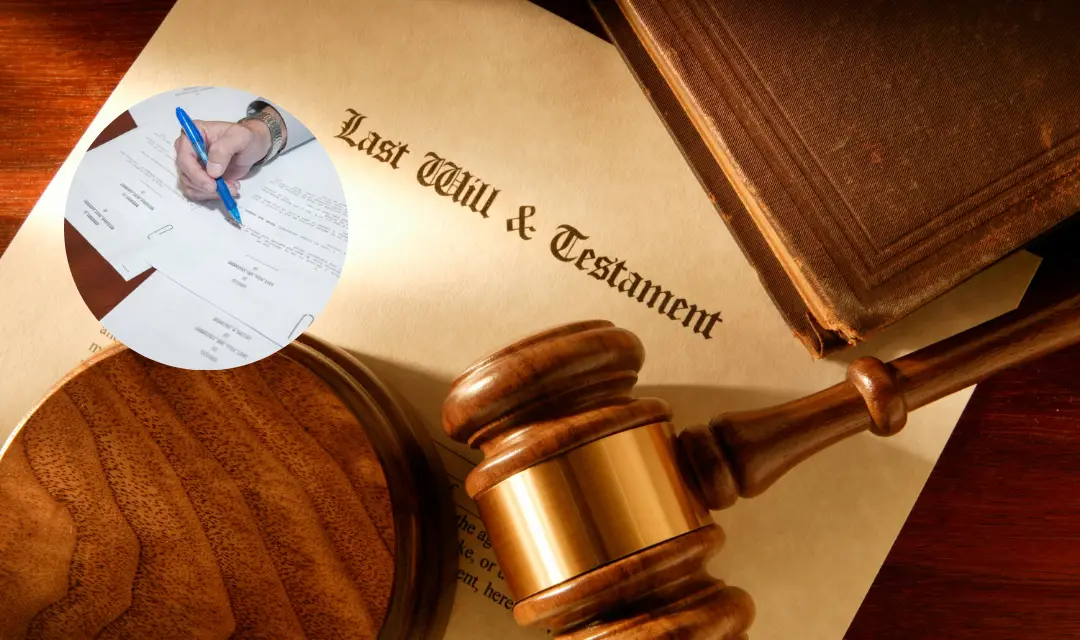In this article, we shall discuss both Will and Codicil. During his lifetime, a person accumulates property as well as rights and certain obligations. This includes the person’s estate which may comprise both real and personal properties, such as ownership of a tract of land, house and lot, automobiles, and other valuable personal belongings.
Similarly, rights and obligations are transmissible to the heirs in which existing debts of the decedent subsist against the estate even after death. In this regard, a person may want to plan the distribution of his estate and other transmissible rights and obligations, having in mind the occasion of an eventual death.
This will allow a seamless settlement of disputes over affairs and estate of the testator especially if there are other people who have interests in the division of the estate, other than their compulsory heirs.
Under the Philippine laws, a person is allowed to make a Will to determine how the estate can be transmitted effectively upon his death. Accordingly, a Will is an act whereby a person is permitted, with the formalities prescribed by law, to control to a certain degree the disposition of this estate, to take effect after his death.1
Will and Codicil
The making of a Will can be a strenuous and challenging task. Depending upon the assets to be disposed of, it may require time, effort, and resources to perfect it. Furthermore, the law provides for the manner of the Will’s execution to be legally binding to all the heirs.
Although, one may not make a Will. Yet, even in the absence of it, the estate of a deceased person can still be adjudicated through various legal proceedings of settlement of the estate of the deceased, whether judicially or extrajudicially.
Moreover, after the drafting of the Will has been done and during the lifetime of the testator, certain amendments thereof may be effected to provide specific updates or revisions to certain provisions. The testator does not necessarily need to change his Will in its entirety. Such amendments may also be used to clarify or revoked some parts of the Will.
A codicil is a legal document that reflects any modifications or amendments to the last Will and testament. It is a supplement or addition to a will, made after the execution of a Will and annexed to be taken as a part thereof, by which disposition made in the original Will is explained, added or altered.2
How to write a codicil to a will?
If the testator feels that he has to amend any part of his Will for whatever reason, he may add new clauses or take out old provisions. This allows the testator to make modifications to the Will without having to completely revise it. Doing so would be a tedious and protracted process. This may be done through a codicil, instead.
Prior to the advent of technology and digital transformations, codicils were more common. Making a full last Will and testament may require to rewrite it completely by hand or analog typewriter then, which may take some time. Therefore, supplementing the will with codicil may allow the testator a quick edit of the portion of the last Will and testament that he wants to update or revoke.
With the availability of digital systems and devices such as computers, codicils may have become less popular. Insertions to existing Will has become easier, subject to compliance with the formalities of making it. Nonetheless, depending on one’s intentions and preferences, codicils may be a useful way to make minor changes to a Will.
Formalities for making a codicil
In order that a codicil may be effective, it shall be executed as in the case of a will.3 It needs to comply with the same formalities as if it were a Will.
For instance, a codicil has to be signed by three or more witnesses to witness the testator’s signature. The codicil must be executed in writing and in a language or dialect that is known to the testator. The signing by the witnesses and the testator in their presence must be witnessed by all of them.
The testator must also be at least eighteen (18) years of age and must have a sound mind which means that he has the full capacity to act and reason out and he is not under certain disparaging conditions or under distress.
Moreover, it must be attested by witnesses whose signature should appear in the document as well as the testator’s signature .
Accordingly. an attested notarial Will may have a holographic codicil while a holographic Will may have an attested notarial codicil.
Although it is not per se a complete Will, a codicil is used primarily to change the provisions of the previous Will it seeks to supplement modify, or amend, while leaving the majority of its parts undisturbed.
Thus, the codicil forms part of the Will and must be included in the probate proceedings upon the death of the testator.
Probate of codicil
In the case of Nicolas Macam and Juana Gatmaitan,4 the Supreme Court ruled that:
It is not necessary that the will and the codicil be probated together, as the codicil may be concealed by an interested party and it may not be discovered until after the will has already been allowed; and they may be presented and probated one after the other, since the purpose of the probate proceedings is merely to determine whether or not the will and the codicil meet all the statutory requirements for their extrinsic validity, leaving the validity of their provisions for further consideration.5
What is the purpose of a codicil and its benefits?
The fundamental purpose of a codicil is to permit the testator to amend his living Wills, trusts, and other instruments without changing the essential terms thereof. Consequently, those who are legally protected may handle their inheritance plans effectively with the help of a codicil.
There are certain benefits in making a codicil to a Will. First, the deftness of its application. A testator may incorporate express changes or additions without having to change the entirety of Will.
Secondly, It allows for greater flexibility because changes to specific provisions can be made quickly. Furthermore, it is valid as long as the execution of a codicil complies with the requirements of the law.6
A codicil is legally permitted and is designed to provide a person or testator a certain degree of freedom to effect his specific purpose. The primary function of a codicil is to amend a Will without necessarily doing a complete redrafting of the same, which is more tedious and burdensome.
This option for the testator provides numerous benefits as cited above when used correctly and with proper legal foundations.
Some examples of amendments that a person may make in his existing Will include changing the address of the beneficiaries. In addition, the testator, through the codicil, may remove or add a gift and its recipient, as well as to adjust share percentages and division of real and personal properties.
For instance, a testator may also remove a gift or reduce the amount originally provided to a certain person because of some acts of ingratitude or any other untoward circumstances that the beneficiary committed.
Furthermore, during the lifetime of the testator, he may have been too close to someone and suddenly he wishes to leave some part of his fortune to such person. A codicil can also revoke a prior Will.
The testator may incorporate in the codicils additional beneficiary and newly acquired property, removal of property, or even exclusion of beneficiary that predeceased the testator. The testator can change the executor, as well, through codicil.
Advantages of both a Will and Codicil
While codicils often do not have content limitation, it is a good idea to implement it when the purpose is to provide a brief and simple update that will provide clarification to the meaning of an individual’s last Will and testament.
On the other hand, a last Will and testament is a legal document that outlines the distribution details of one’s possessions, including investments and other interests, upon their death.
It can be advisable to just rewrite an existing will if there have been significant changes in the person’s life and they wish to make significant updates.
To identify the modifications and changes that need to be made, it is a good idea to look over the existing Will line by line.
While a codicil can be used to add or remove a beneficiary from a will, it is practically advisable to create a new will instead. By making a new will, one can avert future disagreements among the heirs.
Testator’s preference
Creating a new will or inserting a codicil is largely dependent on one’s personal intentions and preferences.
The circumstances under which a person may choose to make a new Will or make supplementary insertions to an existing last Will and testament will be heavily influenced by the purpose and individual goals that a person shall desire to pursue in order to avoid the hassle and other matters that may entail legal services and court appearances.
If the intention of the testator is just to shed light or elaborate a specific portion of his Will or he just wanted to make a minor change or addition, the use of codicil would be a practical alternative.
Nevertheless, if the testator’s goal is to completely or significantly alter an earlier Will, going through such a process would be prudent and advantageous because it would reflect his genuine goals, preferences, and aspirations.
Final Thoughts
It is also more practical to seek legal advice from a lawyer regarding these sensitive matters related to successions and wills, as these may be the root cause of many family disputes and dysfunctions, which have sometimes resulted in misunderstanding and the severance of harmonious relationships.
Thus, one must consider writing a Will in a way that reflects his true intentions, where the executor is left with no choice but to carry out the contents of the will without resorting to various interpretations and legal proceedings.
A codicil is a wise choice when it is easier to change the Will than to draft a new one. Furthermore, because circumstances and a person’s state of affairs may change during the testator’s lifetime, a Will is unlikely to be final.
Certain amendments and supplementary insertions may be legally exercised, such as if the original devisee or legatee committed an act of ingratitude that warrants the testator to make express amendment to existing Will.
Finally, resorting to a codicil is preferential as long as it serves the testator’s intent and purpose. Yet, to avoid further revisions, one must bear in mind the processes and other legal implications accompanying it. As long as it complies with the existing law, the primary intention and convenience of the testator must be of high importance.




